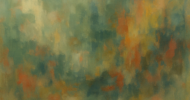I am very resistant to burnout solutions that focus solely on the individual, as these seem to imply that the problem originates in the affected person. This approach pokes at a sore spot, because of the years I spent secretly worried that the reason I left practice was personal weakness or inadequacy, something I lacked or failed to do.
When in 2013, I ran across the research on burnout, I learned otherwise. By definition, professional burnout is caused by workplace stress. It is not due to a personal weakness, and it can happen to anyone.
My presentations and the book I co-authored make this point: That while individual-based solutions like mindfulness and medication practice are very valuable, they must not distract a health care organization from dealing with the underlying causes of stress in the workplace: broken processes, disrespectful culture, inefficient electronic health records (EHRs), lack of team-based care.
A recent interview caused me to rejigger my thinking on the topic. Tom Jenike, MD, is chief human experience officer at Novant Health, an integrated health system in North Carolina. (Love the title.) He began our interview describing an initiative at his organization that focuses on building resiliency in clinicians. A dime a dozen, I thought. Yet another health system placating frontline physicians and nurses with stress reduction techniques.
But within the span of the call, I changed my mind about the relationship between individual and systems solutions. Why? Because of the results—not just the engagement and satisfaction outcomes, but the culture and systems changes that the initiative has catalyzed.
The Novant Health Leadership Development Program involves pre-work, a three-day intensive workshop, and ongoing connection with “graduates.” Working through a curriculum developed by Jenike and a professional coach, groups of 15 to 20 physicians look at their patterns of thinking and acting that cause problems, such as the belief, “I must be in control.” Since 2013, about 800 physicians have completed the training. In addition, about 900 nurses have completed a version of the course tailored to nurses.
I asked Jenike, “How do you avoid resentment among physicians? Other organizations that lead burnout prevention efforts with individual solutions are often met with anger from physicians who see all too clearly the systems problems that frustrate and exhaust them.” He told me that they start each retreat by acknowledging the difficulties in health care today. “We say, ‘It is hard to be a physician in 2017. You are not imagining this. This is reality. Are you willing to look at the parts you can control? Are you willing to admit that you play a role in making the hamster wheel go faster?’”
He almost had me convinced about focusing on individual solutions when he shared their results. According to Jenike:
- Physicians who had attended the program scored in the 97th percentile for satisfaction on the Press Ganey survey, while physicians who had not attended scored in the 50th percentile
- Reduced turnover among physicians
- Faster, easier filling of positions for physicians in the medical group
- Culture change: Once about 300 people in the health system had completed the program, the organizational culture began to shift. Before the program, the challenges of health care were rarely discussed openly; now the topic is openly discussed. Clinicians have stepped forward when concerned about colleagues.
- Feedback: Participants often call the program “life-changing,” and leadership has received letters from spouses of participants thanking them for the changes they see in their loved one.
But the piece of data that really jazzed me was this: “graduates” of the program, who report feeling grateful the health system invested in their well-being and a sense that the organization cares for them as people, have begun “leaning in” to identify and fix systems problems. They are volunteering for think tanks, convening teams to help improve the efficiency of the EHR, steering groups to implement team-based care, and starting mentoring initiatives.
This, to me, is really exciting, and it mirrors the approach used by many successful organizations outside of health care. For example, Bob Chapman, CEO of Barry-Wehmiller, has built a corporate culture — and a multibillion dollar engineering company — around the idea of caring for the workforce first. (I recommend his book, co-authored by Raj Sisodia, Everybody Matters: The Extraordinary Power of Caring for Your People Like Family, as a really inspiring read for leaders inside and outside health care.)
We know that systems problems drive burnout. I have always thought this meant we need to use systems solutions first, or at least in conjunction with, individual solutions. Jenike and the program at Novant have shown that another option works too: individual solutions first then systems solutions. By caring for the individual, the organization builds a workforce that is resilience and has the bandwidth to engage in fixing the systems problems that fuel burnout.
Diane W. Shannon is an internal medicine physician who blogs at Shannon Healthcare Communications.
Image credit: Shutterstock.com































![Antimicrobial resistance: a public health crisis that needs your voice [PODCAST]](https://kevinmd.com/wp-content/uploads/Design-1-190x100.jpg)
